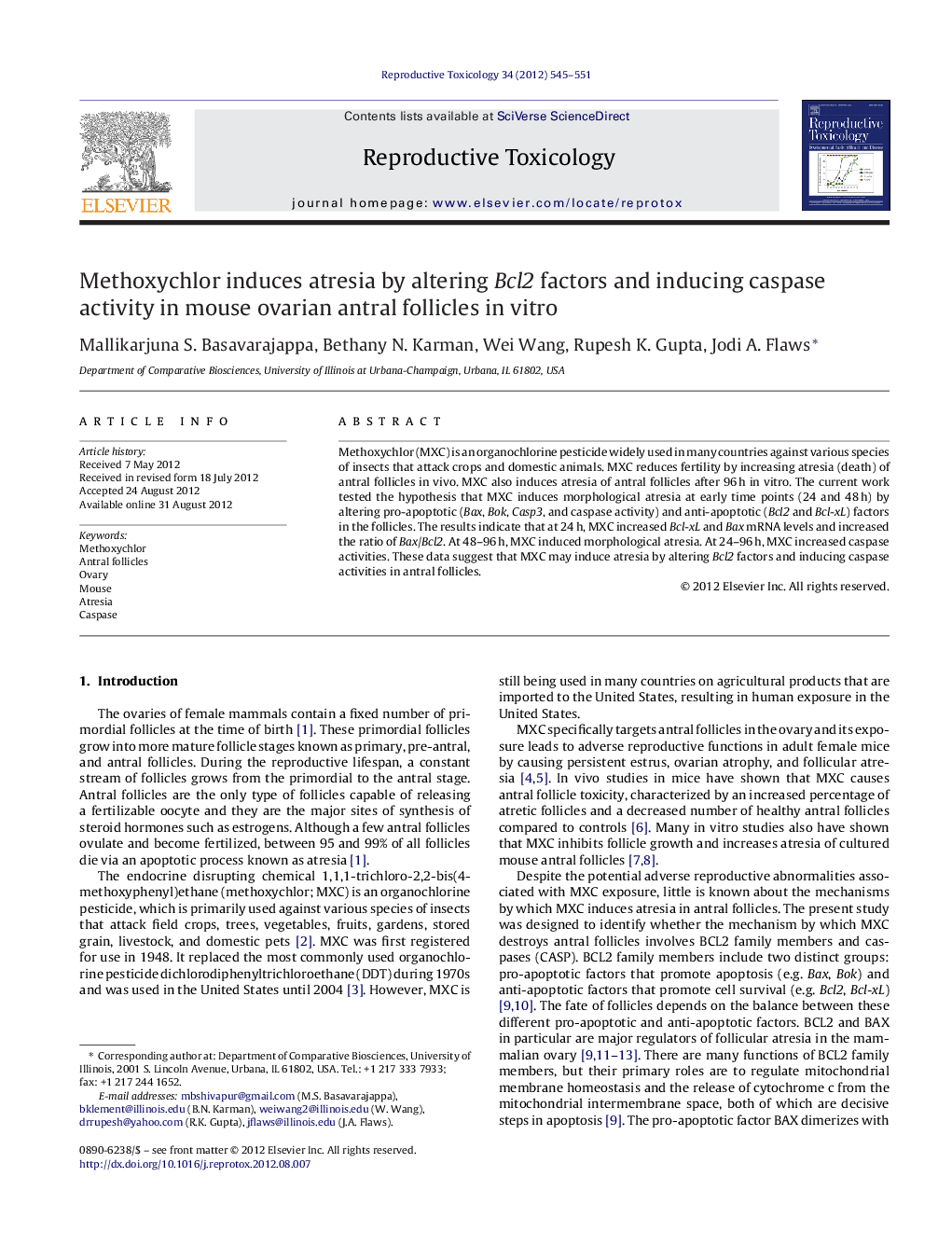| Article ID | Journal | Published Year | Pages | File Type |
|---|---|---|---|---|
| 2593869 | Reproductive Toxicology | 2012 | 7 Pages |
Methoxychlor (MXC) is an organochlorine pesticide widely used in many countries against various species of insects that attack crops and domestic animals. MXC reduces fertility by increasing atresia (death) of antral follicles in vivo. MXC also induces atresia of antral follicles after 96 h in vitro. The current work tested the hypothesis that MXC induces morphological atresia at early time points (24 and 48 h) by altering pro-apoptotic (Bax, Bok, Casp3, and caspase activity) and anti-apoptotic (Bcl2 and Bcl-xL) factors in the follicles. The results indicate that at 24 h, MXC increased Bcl-xL and Bax mRNA levels and increased the ratio of Bax/Bcl2. At 48–96 h, MXC induced morphological atresia. At 24–96 h, MXC increased caspase activities. These data suggest that MXC may induce atresia by altering Bcl2 factors and inducing caspase activities in antral follicles.
► Methoxychlor increases the Bax/Bcl2 ratio in antral follicles at 24 h. ► Methoxychlor increases caspase activity in antral follicles at 24 h. ► Methoxychlor-induced increases in the Bax/Bcl2 ratio and caspase activity may lead to atresia by 48 h.
